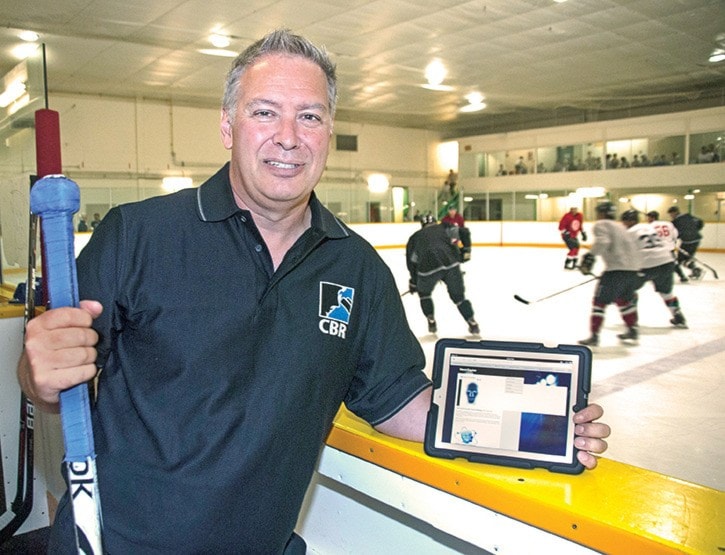Eleven-year-old Jack Walkey concentrates on the eight floating colourful orbs on the large computer screen in front of him. A few of them flash quickly from yellow to orange and back again, then bounce around the screen – all the while the young boy’s eyes barely flinch.
Walkey stays focused, trying his hardest to ensure he keeps track of which balls change colour.
This is Neurotracker, a piece of software being used by researchers at the University of Victoria to better understand concussions in kids, which will hopefully lead to standardizing diagnoses and treatment of brain injuries, especially for children playing contact sports.
Brian Christie, director of UVic’s neuroscience graduate program, and fellow researchers across Canada are using the software to test young hockey players pre- and post-concussion.
“Any time they get a concussion, their ability to perform the game drops dramatically, almost in half, and as they return from the concussion we can see their speed following the balls come back,” Christie said. “It actually gives us a sort of return-to-play guideline.”
Christie and other researchers were recently awarded $1.4 million over five years from the Canadian Institutes of Health Research for this study, which aims to standardize concussion data across the country to better understand symptoms and long-term effects.
This will give parents, players and coaches clearer information to make better decisions around treatment and when a child is safe to get back in the game.
“Before returning to play, we put them through the program again and it gives us, as parents, a greater level of comfort after our children have received a blow to the head,” said Frank Stanley with the Victoria Racquet Club.
Some 200 kids aged 6 to 17 from the Racquet Club have been tested using Neurotracker.
“We’ve had a couple (13- and 14-year-old) hockey players who have used this after receiving a concussion. It has been very practical in their return to play protocol,” Stanley said. “Even the players themselves are becoming more aware of the impact concussions can have on their playing careers and their enjoyment of the game.”
“For a long time … we looked at players who suffered concussions as not really having an injury, and now we’re recognizing that these are probably the most severe injuries that players can sustain,” Stanley said.
Dr. Chand Teneja, a pediatric clinical neuropsychologist, says this study is groundbreaking, as there isn’t much research into concussions on youth.
“The majority of kids who do hit their head are not even going to the emergency room. Maybe the parents find symptoms a few days later: vomiting, dizziness or nausea. Oftentimes they go straight back to school and haven’t been diagnosed,” Teneja said. “You do want to take care of those physical symptoms, but there could be other symptoms: cognitive problems and processing speeds are not as noticeable.”
Last week young hockey players at Toronto Maple Leaf Ryan O’Byrne’s charity hockey camp participated in the program, too. O’Byrne, a Victoria native, said partnering with Christie was a no-brainer.
“Raising this awareness and doing baseline testing at my camp has been a great success,” he said.
O’Byrne said he feels the pressures in his career, especially in his role as an intimidating defenceman, to get back on the ice as soon as possible following a head injury.
“I’ve done similar concussion programs with respective NHL teams in the past, nothing quite as advanced as Dr. Christie’s,” O’Byrne said. “Concussions are an injury that you can’t see. It’s difficult for people to sometimes sympathize with you. They ask ‘What’s wrong? Why aren’t you playing?’”
Stanley says it’s a step in the right direction that parents and players are becoming more aware of concussions as an injury.
“Sidney Crosby’s concussion (in 2011) was a turning point,” he said. “He sat out almost an entire season, which shone a spotlight on just how important it is to understand concussions, and understand when children can return to play.”
kslavin@saanichnews.com
